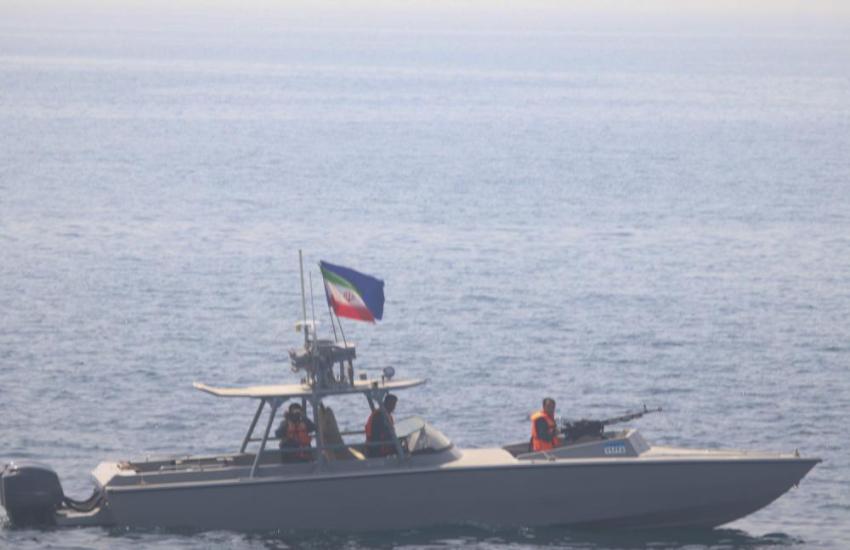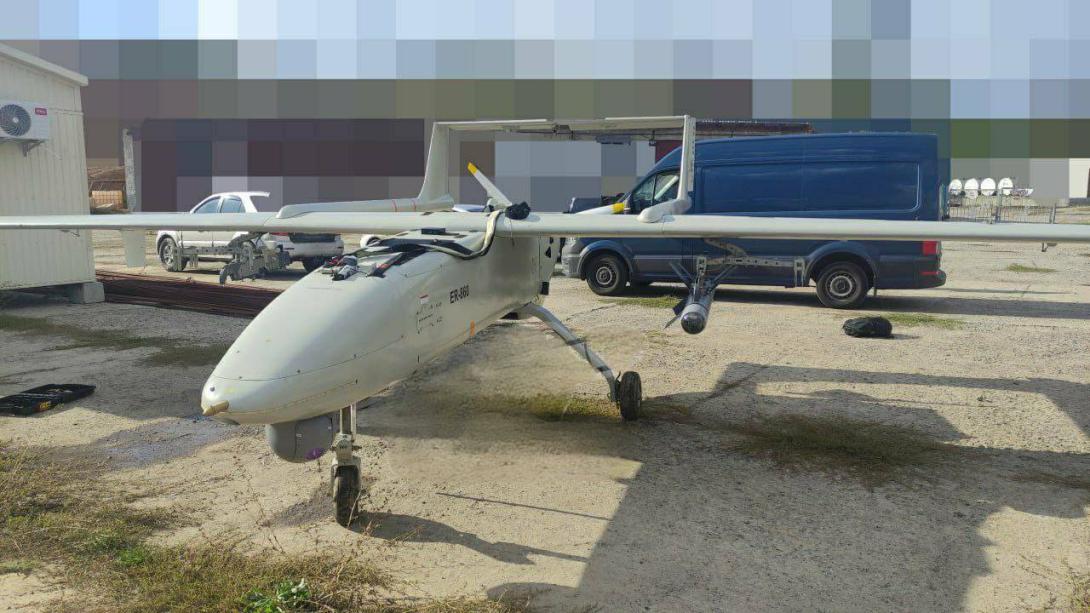Are Iran’s Drone Capabilities a Threat?
Iran’s ability to develop unmanned aerial vehicles (UAVs) has produced enough success to give the Islamic republic reason to celebrate; nevertheless, the capabilities will continue to encounter increasing technical limitations.
“If you think of Iran as a country that’s not technologically sophisticated, you’re going to be at an intellectual dead end trying to explain how they can build such technologies, but they’re not technologically backward. They’re actually rather technologically advanced,” said Sam Bendett, a researcher at the Russian Studies Program at the Center for Naval Analyses, a think tank.
Iran commands an arsenal of unmanned aerial devices that it developed using a wide variety of tactics, combining engineering, reverse engineering and sheer shrewdness.
The country has developed drones since its war with Iraq in the 1980s. In time, they created a portfolio of systems from small, short-range to modern intelligence, surveillance and reconnaissance units. The technology first came from China, and the capture of U.S. and Israeli devices has provided opportunities for reverse engineering, according to a United States Institute of Peace report
Iran’s “lateral thinking” has led many to speculate that a recent Irani-Venezuelan cargo 747 airplane discovered to have surreptitiously flown to Argentina’s city of Córdoba, one of South America’s aerospace industry centers, could be linked to illicit drone parts procurements. The FBI obtained a warrant to seize this aircraft in July of this year, arguing anti-terrorism violations, as Argentine authorities detained it and initiated an investigation.
“Iran’s trying to build larger and larger ones that can fly further and further. They seem to have some drones that, at least they claim, can have a range of several thousand kilometers,” said John Krzyzaniak, an Iran-focused researcher at Wisconsin Project on Nuclear Arms Control, a think tank linked to the University of Wisconsin.
“Iran represents the most serious concern in the region, and that concern is manifested in a couple of ways: it’s both capability and numbers of ballistic missiles, cruise missiles and UAVs,” said Vice Adm. Brad Cooper, USN, commander, U.S. Naval Forces, Central Command; commander, U.S. Fifth Fleet; and commander, Combined Maritime Forces.
How these weapons became a concern to one of the top U.S. military planners responsible for the region is the result of meticulous construction and a clear vision from government.
“[Iran] was growing their drone development and manufacturing workforce because they were growing their drone operator workforce over time,” Bendett explained. Over the years, a series of establishments mushroomed around this capability.
“Government has wholeheartedly supported this initiative and allocated the resources. It allocated funding to the development of these technologies,” Bendett said.
With extra resources, the military set up a network of companies and research centers to acquire, develop, deploy and evolve these weapons.
Among these, Paravar Pars Company stands out as a company associated with the Iranian Islamic Revolutionary Guard and Imam Hossein University. The U.S. Department of the Treasury sanctioned these institutions, among others, for developing and proliferating UAVs, according to official U.S. information.
Imam Hossein University operates a defense technology and security research program and educates technicians in the development of pure and applied sciences in the fields of defense sciences, according to its website.
Attempts by SIGNAL Media to seek comment from all three institutions were unsuccessful. Similarly, SIGNAL Media attempted to contact other Iranian organizations sanctioned by the Department of the Treasury for drone-related violations.
After decades of indigenous research adapted to the needs of Iranian defense, the close association with the Revolutionary Guard yielded battlefield science.
“In the past, the [Islamic Revolutionary Guard, Aerospace Force] distributed U.S. and Israeli-made UAVs to Paravar Pars Company, which were ultimately used to reverse engineer and reproduce indigenously made UAV models,” stated the Department of the Treasury in a public document.
Iran’s drone industry developed into an export to support political ambitions regionally at first, but now, these systems travel beyond Iran’s vicinity. Developing these weapons includes collaborating with local violent groups to test design and tactics at no cost to the Islamic republic.
Ansar Allah, a Yemeni extremist group fighting a civil war and countering Saudi Arabia’s influence, employs Irani technology for many of its attacks. Ansar Allah is better known internationally by the name of the tribe from which it recruits most of its operatives, the Houthis.
“Houthi attacks have involved a mix of drones, land attacks and cruise missiles,” Krzyzaniak said.

The Houthi rebels test the weapons and try new tactics, and many of its actions have received widespread international attention and have had destabilizing global impacts.
“Iran will design those [drones], give those to the Houthis, let the Houthis use them and see how they work best, and then that information gets fed back to the Iranians,” Krzyzaniak said. “I think there’s a symbiotic relationship.”
Iran also shares technology or systems with other extremist organizations in the region. “It’s the proliferation of those weapons systems to proxies in Yemen, in Lebanon, Iraq and Syria and that brings them to a completely different level,” Adm. Cooper said.
This approach has several benefits, as Tehran’s agenda receives a boost, avoiding the costs of direct confrontation.
Proliferation has made a name for these products, and now they have made their way into Russian activities against Ukraine.
Moscow is currently employing Iranian systems for intelligence and attack, according to a recently quoted senior military official at the Pentagon. Iran officials have repeatedly denied supplying any weapons systems to Russia, and the Kremlin has voiced similar refutations.
Still, several reports question those remarks, including social media posts from Ukraine showing what would reportedly be remains of Iranian UAVs.
Meanwhile, the tactics used with insurgents in the Middle East don’t seem to apply in a more complex tactical environment.
“It’s backfiring a little bit… when it comes to the ability of these drones, they’re not well designed for high-intensity conflict. They seem to be fairly useful for low-intensity stuff, one-off strikes on soft targets, fixed targets. They appear to be a lot less useful in Ukraine right now, where it is a fast-moving high-intensity conflict,” said John Caves, an Iran scholar at the Wisconsin Project who served as an artillery officer in the U.S. Army.

If you think of Iran as a country that’s not technologically sophisticated, you’re going to be at an intellectual dead-end trying to explain how they can build such technologies …
A modern and well-equipped army has further opportunities to jam or intercept the systems before their mission is achieved.
A recent Twitter post by the Ukrainian Ministry of Defence shows a downed Mohajer-6 surveillance drone, believed to be one of the most advanced models in the Iranian arsenal.
“Those more advanced drones are largely unproven, and it seems like Ukraine may have little difficulty taking those down through electronic measures like jamming,” Krzyzaniak said in an interview.
On the other technological end of the spectrum, things are more complicated. “The smaller, cheaper, simpler types that are not really drones in the sense of the popular imagination, they’re like loitering munitions or even just simple cruise missiles, which is to say, they’re not necessarily remotely piloted,” Krzyzaniak said. “There aren’t sensors on board, and they are suicide drones that are intended to fly towards the target and destroy themselves on impact with a warhead.”
These could cost $20,000, Bendett estimated, and could be sent in waves. The price tag of interception surpasses that of the UAVs.
These simple systems are harder to jam as they have fewer technologies supplying opportunities.
Nevertheless, this means that command is limited, especially beyond line of sight. In a vast theater like Ukraine, reliable communications need links that go beyond the horizon.
“To really be reliable, Iran would have to have its own military satellites,” Krzyzaniak said. “We know Iran is a long way off from being able to have those.”
Despite news reports of the country launching space technologies, Krzyzaniak said that there are claims some models have uplinks, but said, “I’m not convinced those work as advertised, but it’s clearly what they’re aiming for. That’s where they want to be headed.”
Despite technical restrictions, these weapons seem to consistently offer value to planners in Tehran. Therefore, the future of the Iranian UAV program looks bright as long as five conditions continue to be met, according to Bendett. “Obviously, they have enough smart people that they can draw from the internal talent pool and put them to work, but this requires long-term investment, political support, political patronage and a mission in the [Ministry of Defence] that recognizes that this technology is going to be important.”





Comments